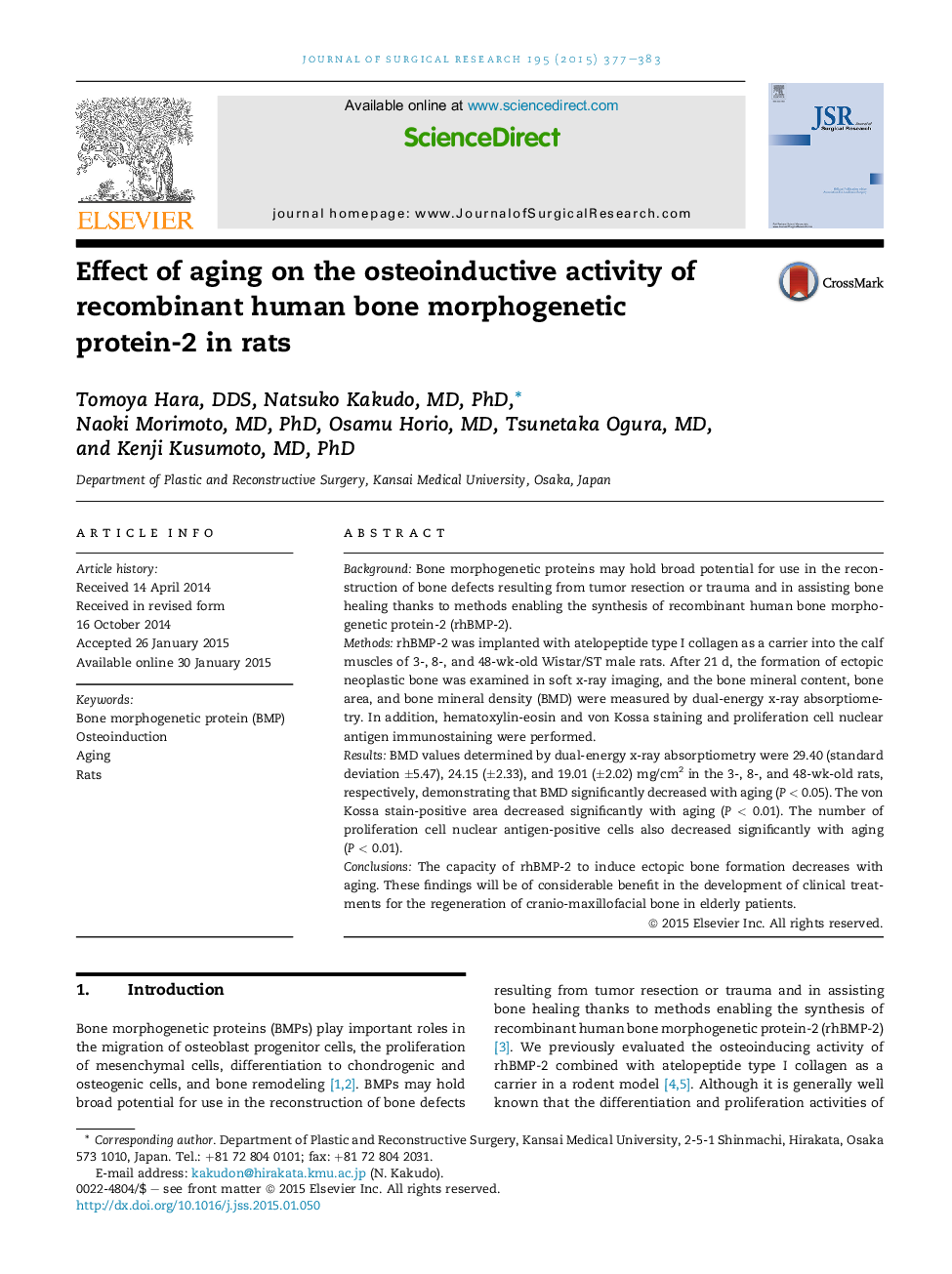| Article ID | Journal | Published Year | Pages | File Type |
|---|---|---|---|---|
| 4299911 | Journal of Surgical Research | 2015 | 7 Pages |
BackgroundBone morphogenetic proteins may hold broad potential for use in the reconstruction of bone defects resulting from tumor resection or trauma and in assisting bone healing thanks to methods enabling the synthesis of recombinant human bone morphogenetic protein-2 (rhBMP-2).MethodsrhBMP-2 was implanted with atelopeptide type I collagen as a carrier into the calf muscles of 3-, 8-, and 48-wk-old Wistar/ST male rats. After 21 d, the formation of ectopic neoplastic bone was examined in soft x-ray imaging, and the bone mineral content, bone area, and bone mineral density (BMD) were measured by dual-energy x-ray absorptiometry. In addition, hematoxylin-eosin and von Kossa staining and proliferation cell nuclear antigen immunostaining were performed.ResultsBMD values determined by dual-energy x-ray absorptiometry were 29.40 (standard deviation ±5.47), 24.15 (±2.33), and 19.01 (±2.02) mg/cm2 in the 3-, 8-, and 48-wk-old rats, respectively, demonstrating that BMD significantly decreased with aging (P < 0.05). The von Kossa stain-positive area decreased significantly with aging (P < 0.01). The number of proliferation cell nuclear antigen-positive cells also decreased significantly with aging (P < 0.01).ConclusionsThe capacity of rhBMP-2 to induce ectopic bone formation decreases with aging. These findings will be of considerable benefit in the development of clinical treatments for the regeneration of cranio-maxillofacial bone in elderly patients.
